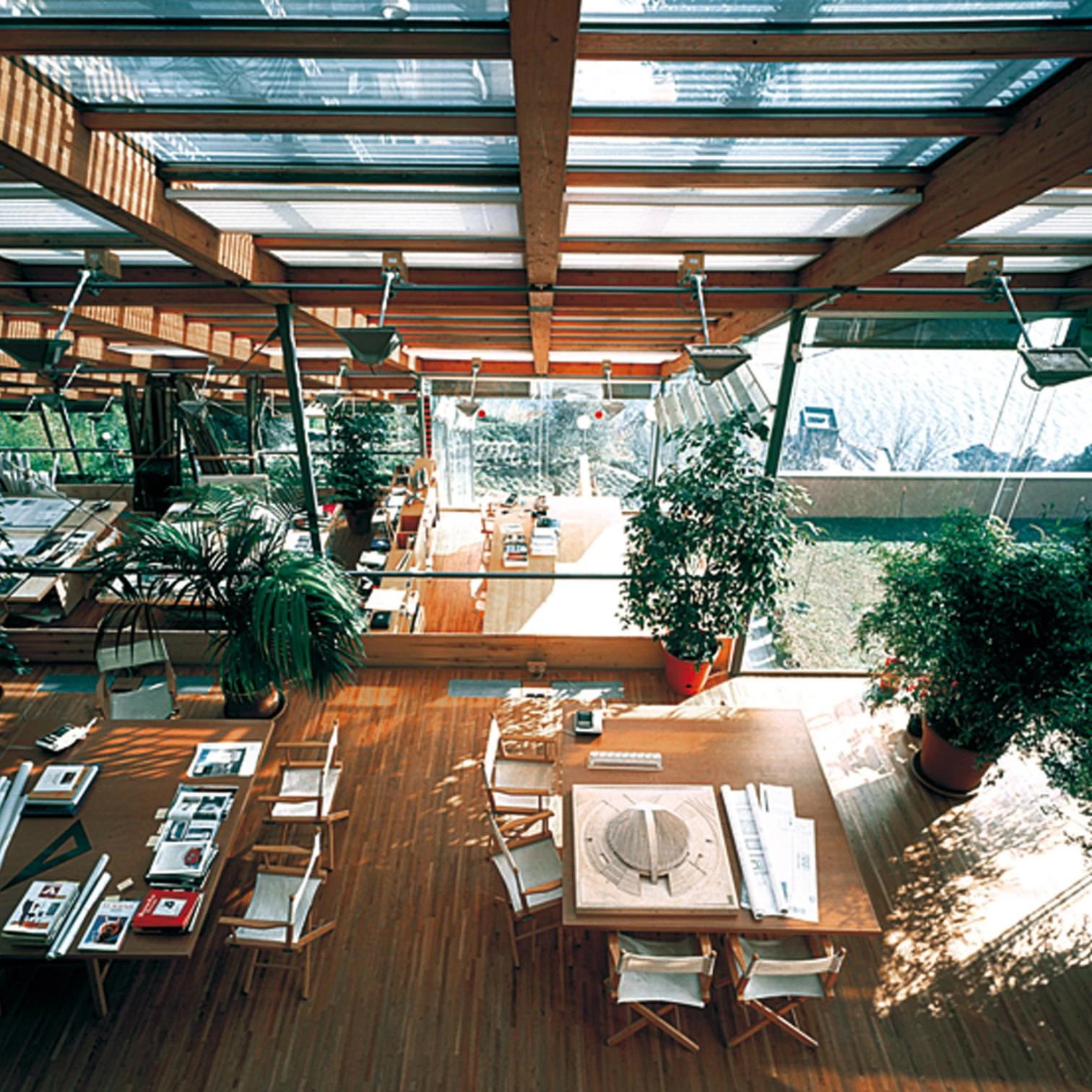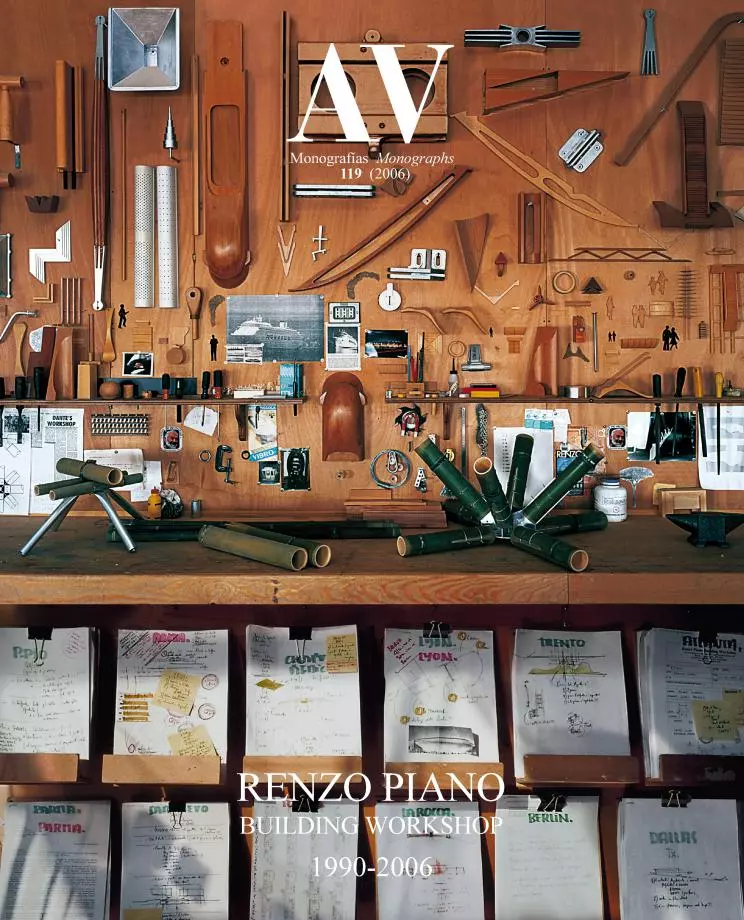
Close to turning seventy, Renzo Piano sails the world’s seas with the courage of a lone sailor. After building on four continents, the Genoese keeps on facing each journey as one of discovery, in which the skillful use of rigging, the mastery in reading the winds and the steadiness in the course do not exclude surprising finds. In the almost domestic and artisanal atmosphere of the Building Workshop of Punta Nave, overlooking the sea of Liguria, the boat captain and his team study the tools at hand, the environmental conditions and the purpose of the trip, but this unique combination of technique, context and program suggests only which direction to take, and the final itinerary is decided in route, turning each journey and every project into a genuine exercise of inventiveness and risk.
While the architect’s concern for articulation and assembly comes from his background as a builder and carpenter, the pursuit of innovation and experiment is a result of the agitated context of his younger years and the engineering flavor of his first references, from the close Prouvé or the faraway Fuller to the fraternal collaboration with Peter Rice. In the end, each building is an idea and a detail: even if the projects are grouped by family, or their sequence reveals genealogical lines, each work has a recognizable profile, summed up in aluminous concept and an element of exquisite design. The happy machine of the Pompidou is abridged in the muscular gerberettes as the laconic Beyeler in the delicate leaves of the roof or the silent extension of Atlanta in the skylight peaks.
This magazine published its first monograph on a contemporary author in 1990 – until then only issues devoted to Mies and Le Corbusier, coinciding with their centenaries, had appeared – and Piano was chosen for this maiden issue, which reviewed his career since the foundation of the Building Workshop in 1981: a career that, after the initial echoes of Piano’s association with Richard Rogers and the impact of their Paris museum, started with his relationship with Dominique de Meniland the extraordinary work of Houston, and went up to the completion of the Bari stadium, the most beautiful of those built for the World Cup held in Italy the year of the monograph, which ended with the project for Kansai airport, a colossal commission won in competition by Piano a few months earlier.
Sixteen years later, AV resumes the chronicle of the Genoese master’s exploration journey, and the logbook starts necessarily on the Japanese coast with the heroic curves of the airport, continues with the monumental huts of the Southern Seas and the full blown sails that greet the Utzon of Sydney, and wraps up a detailed tour through Europe to finally land in America, where – in the wake of the success of the Menil and the 1998Pritzker Prize – he is now completing an extraordinary series of constructive and spatial finds: from the return to Texas in 1999 to collaborate with another exceptional client, Raymond Nasher, and up to the colonization of the cultural territory that extends between the Atlantic and the Pacific with a network of exact precincts that testify to the singular fortune of this oceanic adventure.






